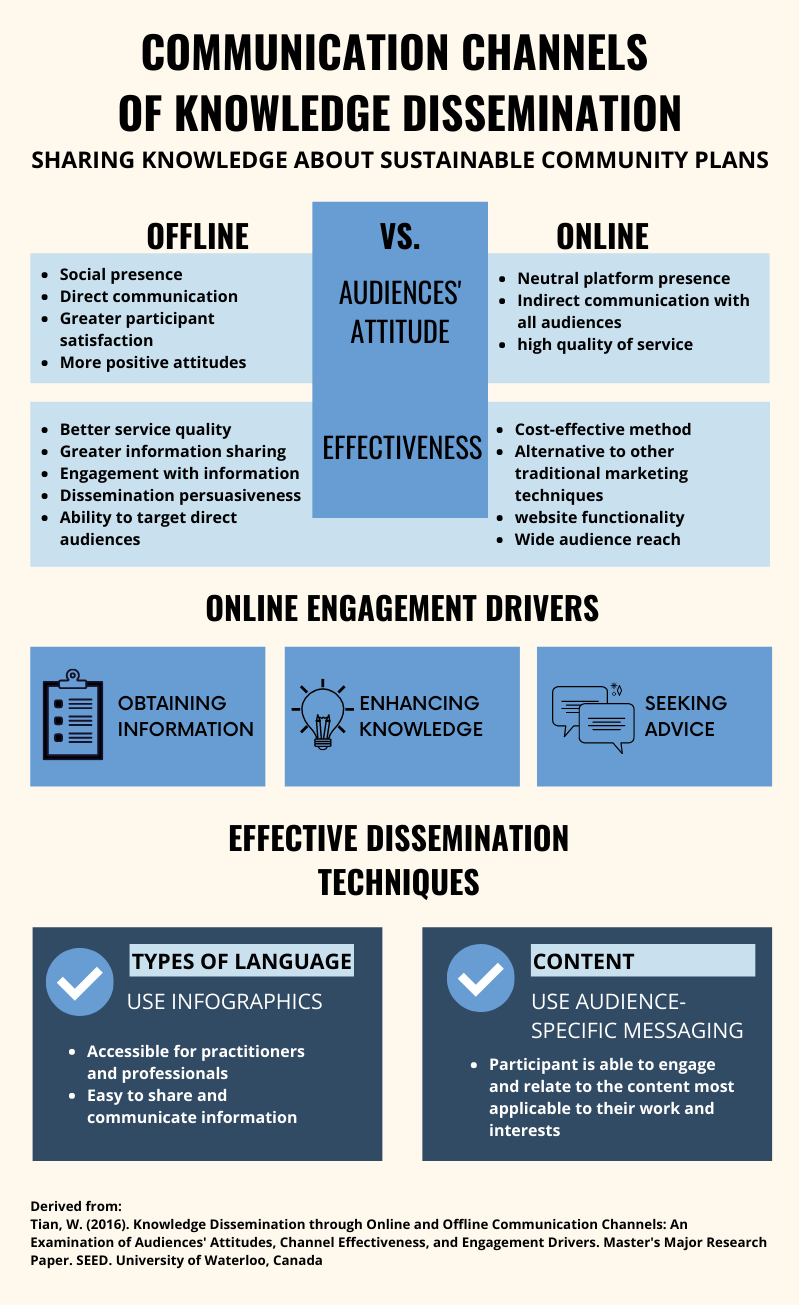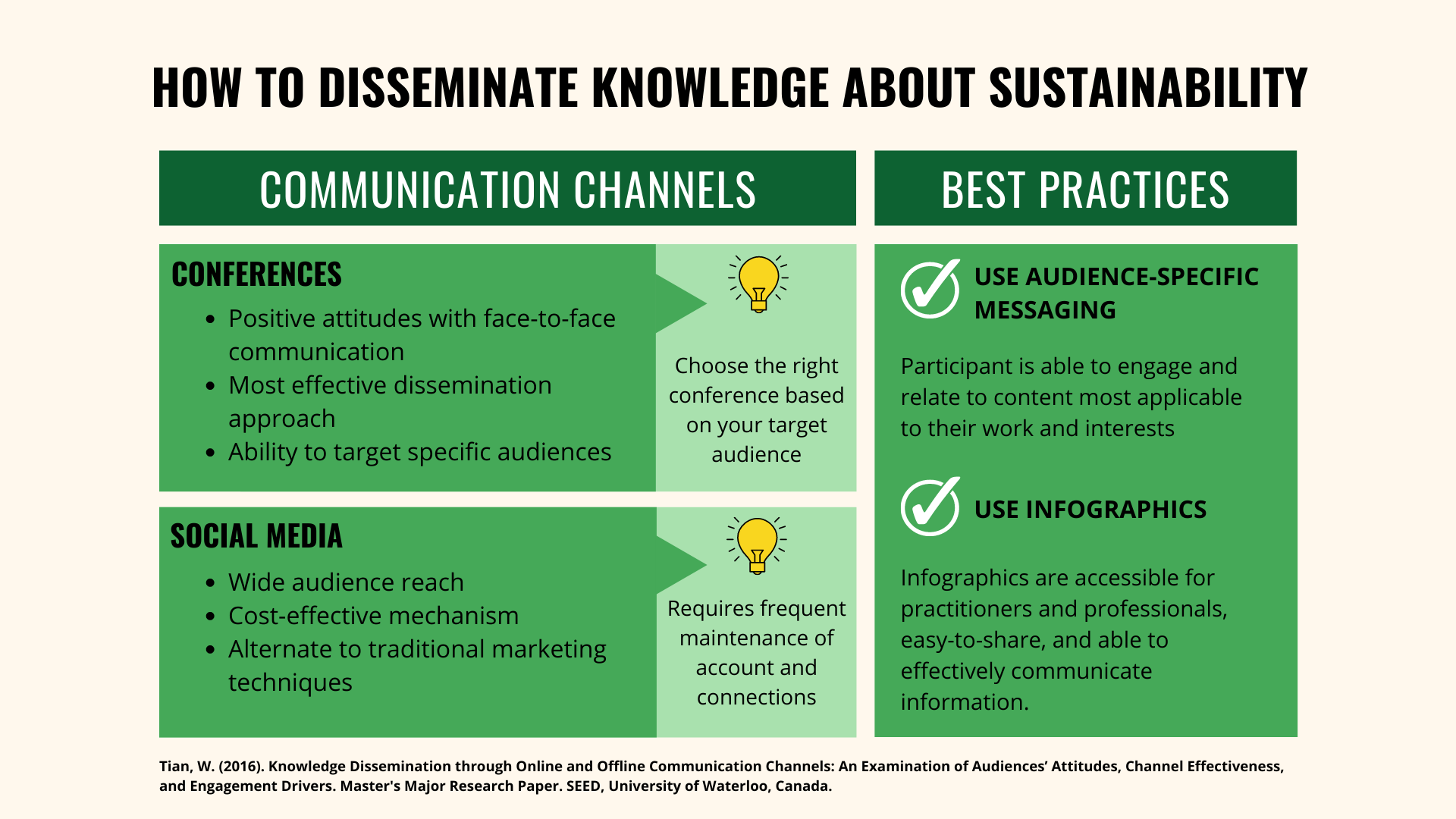The increasing popularity of the Internet has made information more accessible than ever, but it has also made disseminating information more complex. In order to assess and compare the effectiveness of communication channels in disseminating information about Dr. Amelia Clarke's research on implementing sustainable community plans, three channels in particular were compared: Conferences, LinkedIn and Twitter.
Four indicators were used to compare the effectiveness of different dissemination platforms:
- Service quality (level of satisfaction regarding the quality of services offered by communication channels)
- Word-of-mouth (willingness to share)
- Audience engagement (level of involvement with disseminated information)
- Message persuasiveness (how likely the disseminated information affects audiences’ behaviours)
Overall, survey respondents had positive attitudes toward all three channels, but responded more positively to conferences compared to the other two social networking sites (Twitter and LinkedIn). The results indicate that conferences have undeniable advantages in terms of better service quality, word-of-mouth, audience engagement and message persuasiveness.
The image below summarizes communication channels of knowledge dissemination and online engagement drivers.

In general, both social networking sites (LinkedIn and Twitter) provide a high quality of services, and survey participants’ responses to these two sites were quite similar. Only a slight difference exists between Twitter and LinkedIn in regards to service quality, audiences’ willingness to share, audience engagement, and message persuasiveness. Messages on LinkedIn were perceived to be more persuasive than those on Twitter. Meanwhile, Twitter is more effective than LinkedIn for disseminating the same information about implementing sustainable community plans.
Similarly, research has also shown that content and language of dissemination and the role of social media are influential in how audiences respond to the dissemination of information. Results show that visual language (e.g., infographics) receive the highest engagement and response rates from social media users, whereas message content also influences levels of engagement and response. Overall, effective dissemination requires strategic communication planning and design.
The graphic below summarizes the results from the studies on how to disseminate knowledge about sustainability.

This content has been derived from:
Huang, L., Clarke, A., Heldsinger, N., & Tian, W. (2019). The Communication Role of Social Media in Social Marketing: A Study of Community Sustainability Knowledge Dissemination on LinkedIn and Twitter. Journal of Marketing Analytics, 7(2), 64-75. DOI: 10.1057/s41270-019-00053-8
- View pre-publication version: The Communication Role of Social Media in Social Marketing: A Study of Community Sustainability Knowledge Dissemination on LinkedIn and Twitter.
Heldsinger, N. (2015). Mobilizing Sustainability Research: Exploring Social Media and Conference Presentations as Channels for Disseminating Research on Sustainable Community Plans. Master's Major Research Paper. SERS, University of Waterloo, Canada.
Tian, W. (2016). Knowledge Dissemination through Online and Offline Communication Channels: An Examination of Audiences’ Attitudes, Channel Effectiveness, and Engagement Drivers. Master's Major Research Paper. SEED, University of Waterloo, Canada.
Tian, W. (2016). The Higher ED Blog: Twitter versus LinkedIn, which is more effective? Economic Development.